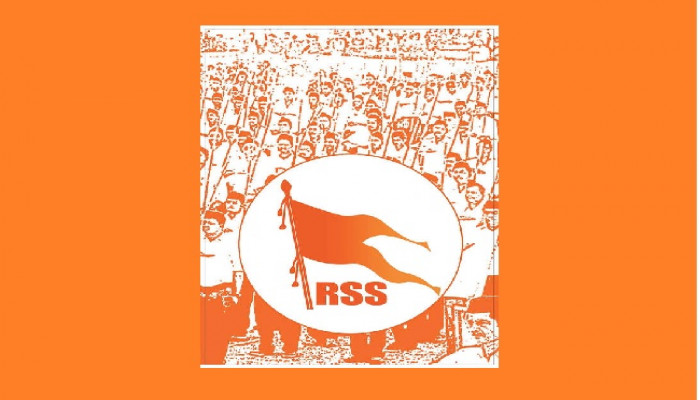RSS at 100: A Century of Discipline, Service, and Cultural Awakening
- In Current Affairs
- 08:42 AM, Oct 02, 2025
- V. Sai Bhargav
Origins and Early Vision
Founded in 1925 by Dr K.B. Hedgewar in Nagpur, the Rashtriya Swayamsevak Sangh (RSS) began with the modest aim of building disciplined, service-oriented citizens committed to the cultural unity of Bharat. From its early days, the RSS emphasised physical fitness, moral strength, and collective discipline through its daily shakhas (branches). These gatherings became the crucible for nurturing character, camaraderie, and a shared national mission.
Growth and Social Service
Over a century, the RSS has expanded into the world’s largest voluntary socio-cultural organisation, with lakhs of shakhas across villages, towns, and cities. Its outreach spans educational institutions, tribal upliftment projects, health initiatives, disaster relief, and skill development. Whether during floods, earthquakes, or pandemics, RSS volunteers have been visible on the ground, working without seeking recognition, a reflection of its motto: Sewa hi Sangh ka dharma (Service is the duty of the Sangh).
Cultural Revival and Hindutva
At its ideological core, the RSS reimagines Hindutva not as narrow religiosity but as a broad civilisational ethos — encompassing truth, love, belonging, and cultural rootedness. Organiser’s centenary essays highlight how this vision seeks to harmonise India’s internal diversity into a single cultural family, while rejecting sectarianism. Leaders like Dr Mohan Bhagwat repeatedly stress the importance of Dharma as a balance — a moral compass against extremism and global consumerism. In this sense, Hindutva is projected as an antidote to fragmentation and as a force for national integration and global harmony.
Panch Parivartan: Five Paths of Transformation
As part of its centenary reflections, the RSS outlined five dimensions of social change:
1. Kutumb Prabodhan (Family Awakening) – strengthening families as the first unit of social health.
2. Samajik Samarasata (Social Harmony) – bridging caste and community divides.
3. Paryavaran Sanrakshan (Environmental Protection) – advancing ecological balance.
4. Swabodh–Swadeshi (Self-awareness and Self-reliance) – promoting local languages, products, and traditions.
5. Nagrik Kartavya Palan (Citizens’ Duties) – encouraging lawful, ethical citizenship even under provocation.
Political & National Role
Although the RSS itself claims to be non-political, its ideological influence has profoundly shaped Indian politics, particularly through the Bharatiya Janata Party (BJP) and allied organisations. From advocating the abrogation of Article 370 in J&K to promoting cultural nationalism, the Sangh’s imprint is visible in India’s governance and policies. The 2014 and 2019 electoral victories of the BJP, backed by RSS cadres, marked a high point of its political influence.
Mass Outreach in Centenary Year
To mark its 100th year, the Sangh has planned over 1 lakh Hindu Sammelans (community gatherings) across Bharat, aimed at reinforcing unity, pride, and grassroots mobilisation. Public lectures, cultural events, and campaigns seek to deepen connections with people beyond traditional shakhas, making the Sangh’s centenary not just an organisational milestone but a national festival of cultural resurgence.
Symbolism and Inspiration
From the discipline of the shakha to the inspiration of the Sangh Geet (RSS songs), cultural symbols remain central. These songs, speeches, and rituals have become tools of social binding and emotional awakening, constantly reminding swayamsevaks of their duty to the nation. For many, the Sangh embodies tyaga (sacrifice), seva (service), and sangathan (organisation).
Contributions to Contemporary Hindu Society
Beyond politics, the RSS has played a formative role in shaping modern Hindu society. Its educational wing, Vidya Bharati, runs thousands of schools across the country, blending modern learning with cultural grounding. Through Vanvasi Kalyan Ashram, it works with tribal communities, helping preserve traditions while integrating access to healthcare and literacy. The VHP (Vishwa Hindu Parishad), another affiliate, has been active in temple renovation, pilgrim facilities, and promoting Hindu festivals with renewed vigour.
The Sangh also engages with the Hindu diaspora, fostering cultural associations from the United States to Africa. For women, organisations like Rashtra Sevika Samiti offer spaces of leadership and community service. In essence, the RSS has positioned itself as both a custodian of tradition and a catalyst for Hindu society’s adaptation to contemporary challenges.
Legacy and Future Outlook
The RSS at 100 stands as both a continuity and a renewal. Its century-long journey reflects:
• Discipline in shaping individuals.
• National Awakening through cultural consciousness.
• Cultural Resurgence by protecting traditions against homogenisation.
• Service & Sacrifice in times of crisis.
Sangh embodies tyaga (sacrifice), seva (service), and sangathan (organisation). Marking its centenary, Prime Minister Narendra Modi released a special ₹100 commemorative coin and postage stamp, the first time in independent India that Bharat Mata has appeared on Indian coinage. Depicted in “Varada Mudra” on a lion with swayamsevaks bowing in reverence, the coin embodies the Sangh’s ideals of service and cultural rootedness. For swayamsevaks, this recognition symbolises not just a century of seva but also the nation’s acknowledgement of the Sangh’s place in India’s cultural journey. Going forward, its leaders envisage an India anchored in Dharma, powered by Swadeshi, and united in diversity. The centenary celebrations are as much about honouring the past as they are about charting the Sangh’s role in India’s future — a role it frames as building a Vishwaguru Bharat (India as a global moral guide).







Comments